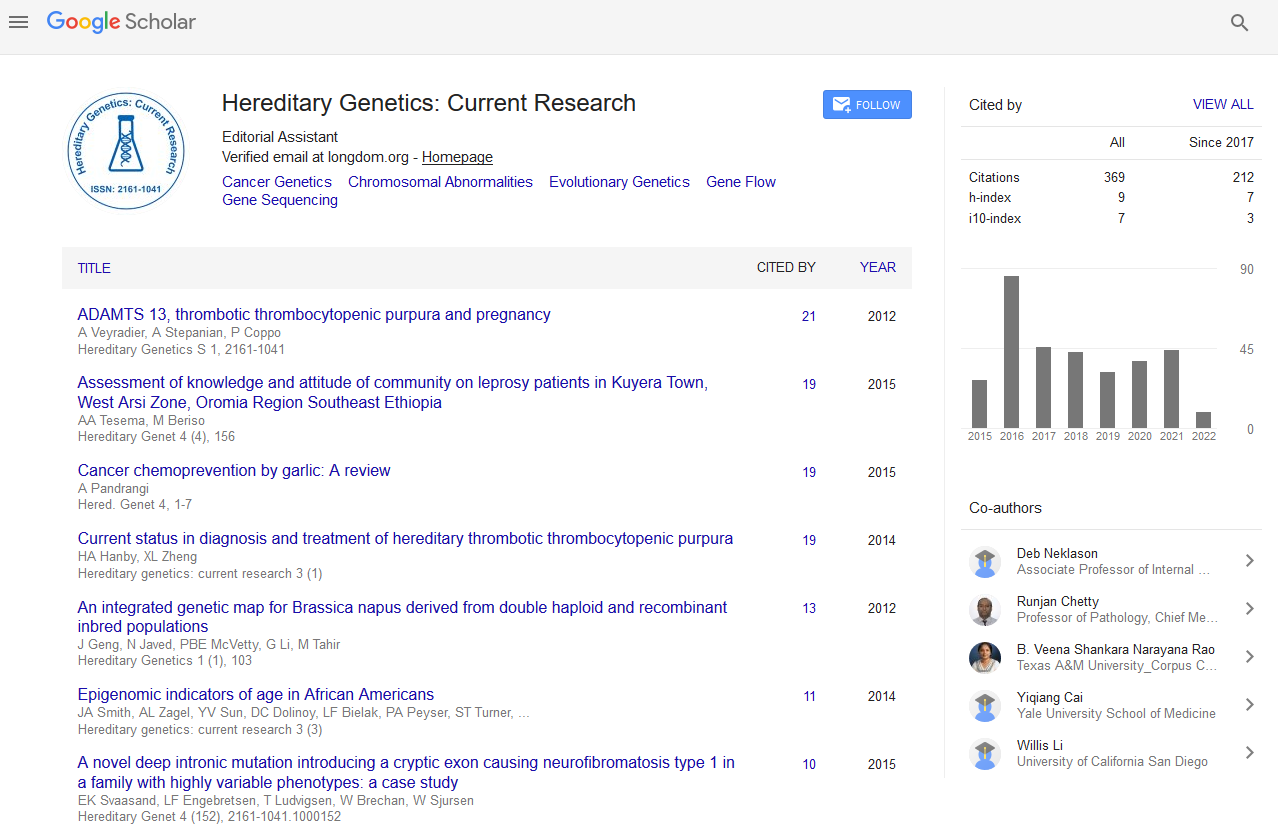PMC/PubMed Indexed Articles
Indexed In
- Open J Gate
- Genamics JournalSeek
- CiteFactor
- RefSeek
- Hamdard University
- EBSCO A-Z
- NSD - Norwegian Centre for Research Data
- OCLC- WorldCat
- Publons
- Geneva Foundation for Medical Education and Research
- Euro Pub
- Google Scholar
Useful Links
Share This Page
Journal Flyer

Open Access Journals
- Agri and Aquaculture
- Biochemistry
- Bioinformatics & Systems Biology
- Business & Management
- Chemistry
- Clinical Sciences
- Engineering
- Food & Nutrition
- General Science
- Genetics & Molecular Biology
- Immunology & Microbiology
- Medical Sciences
- Neuroscience & Psychology
- Nursing & Health Care
- Pharmaceutical Sciences
Abstract
Case Of Severe Unconjugated Hyperbilirubinemia In A Neonate Heterozygous For Gilbert Syndrome
Rebecca Abell, Berrin Monteleone and Anupama Chawla
We present an unusual case of unconjugated hyperbilirubinemia in a 6 day old infant. The bilirubin peaked at 20.1/ 0.6 mg/dL. A work-up for a hemolytic process or metabolic disorder was negative. Crigler-Najjar was suspected. Phenobarbital was given for 3 days with no significant change in bilirubin level. He was discharged home after 20 days of phototherapy with a bilirubin of 3.1/0.4 mg/dL. Five months later, his bilirubin was 0.2 mg/dL. His genetic testing came back positive for a heterozygous mutation for Gilbert Syndrome. In the UGT1A1 gene he had the following mutations: heterozygous *28 (TA 6/7) (c. 40-39insTA), heterozygous *60 (c-3275T>G), and heterozygous *93 (c.- 3152G>A). This result is consistent with a carrier state for unconjugated hyperbilirubinemia and may be associated with mild to moderate hyperbilirubinemia. The relevance of this haplotype of polymorphisms to hyperbilirubinemia in the neonate has not been established. Gilbert syndrome is the most common hereditary cause of increased bilirubin but is typically associated with mild hyperbilirubinemia, around 3 mg/dL. In the homozygous state, diminished bilirubin glucuronidation is observed but it is questionable if the same amount of decreased activity can be seen in the heterozygous state. It has been proposed that when additional mutations exist in conjunction with a heterozygous state, neonatal hyperbilirubinemia is more pronounced. We believe that unexplained unconjugated hyperbilirubinemia should raise the suspicion of a UGT1A1 gene mutation and should prompt genetic testing. Gilbert syndrome should be added to the differential of severe unconjugated hyperbilirubinemia in the neonate


